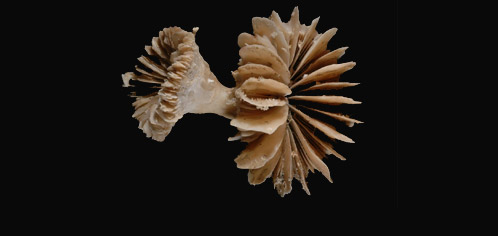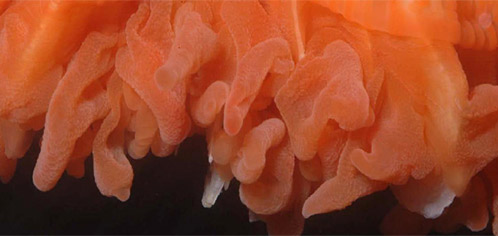Processes of global change
- Chronology of Quaternary climate change
- Isotopic and chemical tracers of ocean circulation
- Biogeochemical cycling in soils
- Rock weathering, and the carbon cycle
- Monitoring coral physiology and environmental stress
We use isotopic and chemical tracers to examine and understand processes that occur on the Earth’s surface. The topics range over wide temporal and spatial scales, from the details of silicate weathering, to oceanic biogeochemical cycling and long-term reconstructions of global climate. We have particular expertise in geochronology, with a focus on constraining the rates and timing of global change during the large climate swings of the last few hundred thousand years. This work is enhanced through collaboration with scientists in the Bristol Research Initiative for the Dynamic Global Environment (BRIDGE).
Below are some examples of the types of studies carried out by researchers in BIG, but you can find out more on the individual pages of earth scientists.
Chronology of Quaternary climate change
In BIG we have focused considerable effort on our ability to produce state-of-the-art, high-precision, accurate dates using the decay of isotopes in the uranium decay chain analysed by MC-ICP-MS. These dates are vital to comparing the relative phasing between different parts of the climate system, and the potential driving forces for these changes.
Some of this work focuses on speleothems (calcite cave deposits). Such mineral deposits have been increasingly recognised as an important archive of information about the past state of the Earth's system. One of the principal reasons for the growth in interest is the ability to date them at high-resolution and accuracy using mass-spectrometric techniques providing unique insights into the history of terrestrial environments. Combined stable isotope and trace element data from speleothems provide valuable information about the past state of atmosphere, air mass trajectories, vadose geochemistry and past vegetation change amongst other parameters. In collaboration with other laboratories we are involved in the provision of chronological constraints for speleothem archives from many locations on the globe, including Mulu, China, Spain, South Africa and UK. We are also working on past sea levels in Bahamas, Yucatan and Croatia. Reef building corals also provide valuable sea level markers and we are testing various geochronological methods using coral at sites in the Great Barrier Reef and Barbados.
We also focus on the timing of changes in ocean environments, for example using the skeletons of deep-water corals. Chemical signatures preserved in the skeletons of scleractinian corals provide valuable climate archives. This technique has been most widely used in tropical shallow-dwelling species. However, some species do not use algal symbionts and are able to live in cold or dark waters so we can also use them to reconstruct climate records from the deep ocean, or from high latitude locations. Compilation maps of the known locations of modern cold water coral distributions show that these corals live in all the ocean basins, and at depths as great as 5,000m. Despite the unique nature of cold water corals as climate recorders, their potential has not been fully realised for reconstructions of either recent or distant past climate variability. This under-utilization comes, in part, from a lack of focused attempt to find and collect fossil corals. We are able to use U-series techniques to establish historic records of population dynamics in deep sea corals, and use these corals to reconstruct the history of deep ocean circulation.
These analyses not restricted to speleothems and corals, however and we have also analysed calcite veins, lake sediments, teeth and ferro-manganese crusts. Many of the results also complement work being undertaken in the realm of human evolution and biostratigraphy using bones found in caves. See Isotopes and Archeology theme
Isotopic and chemical tracers of ocean circulation: today and in the past
Radiogenic and radioactive isotopes of elements in the oceans show spatial and temporal variability that is controlled by inputs to the oceans from the continents, by the mixing of those inputs by the ocean circulation and by removal onto marine particulates. As such, changes in the isotopic composition of the oceans yields information on changes in ocean circulation and continent-ocean fluxes through time, often as a function of climate change. Similarly trace metal incorporation into marine carbonates and sediments reflect key aspects of the oceanic environment. We are using a combination of these types of tracers to study issues as diverse meridional heat transport in the Atlantic, carbon storage and release from the deep ocean and the dynamics of the Southern ocean both today and in the past. See BRIDGE research collaboration.
Biogeochemical cycling in soils
Soils are a vital resource for the production of food and fuel; they store carbon and water and filter out pollutants. Land use change, acid rain, and common farming practices degrade soils leading to a loss of soil nutrients, such as magnesium (Mg). Mg is an essential nutrient for all organisms, yet soils worldwide exhibit Mg deficiencies that threaten soil productivity in both agricultural and forested ecosystems. By quantifying biogeochemical cycles, predictions and protection strategies can be developed for different environmental change scenarios. However, quantitatively tracing elements like Mg through the soil environment is complicated because multiple coupled geochemical, biological, and hydrological processes are involved. By analysing Mg isotopes along with lithium (Li) isotopes (Li has similar chemical properties to Mg, but is not a biological nutrient), we can disentangle and quantify the processes that transform, transport, add or remove these elements from soils and waters.
Rock weathering, and the carbon cycle
The concentration of CO2 in the Earths atmosphere is regulated over geological time by the weathering of silicate rocks, and since CO2 is a potent greenhouse gas, the weathering of silicate rocks plays an important role in determining the Earth’s climate. The rise in atmospheric CO2 following the Industrial Revolution has made it critical for us to understand this process and how climate change, rock weathering and the carbon cycle are inter-related. At BIG we are developing and using isotopic proxies for silicate weathering rates. These proxies allow us to study the processes that control weathering rates today, and to make reconstructions of the amount of silicate weathering in the past, which are crucial in our understanding of the carbon cycle as they offer a means to examine how silicate weathering is both influenced by and influences global climate.
Monitoring coral physiology and environmental stress
Scleractinian coral tightly regulate the biomineralisation of their carbonate skeletons, however, stressors can upset this balance. Isotopic and chemical tracers are incorporated which reflect the response of the organism to the external environment and changes in seawater chemistry, ocean acidification and physical conditions. Boron isotopes, for example, may record the extent a colony elevates pH at the site of calcification relative to external seawater. At BIG we are exploring the factors controlling the geochemical signals captured in the skeletons of corals, grown in culture or manipulation experiments on reefs, and from across divergent environments. The purpose is twofold; to understand the physiological capacity of coral to respond to future environmental stressors such as global warming and ocean acidification, and to develop geochemical proxies from fossil skeletons of past environmental conditions.
Working in this area




